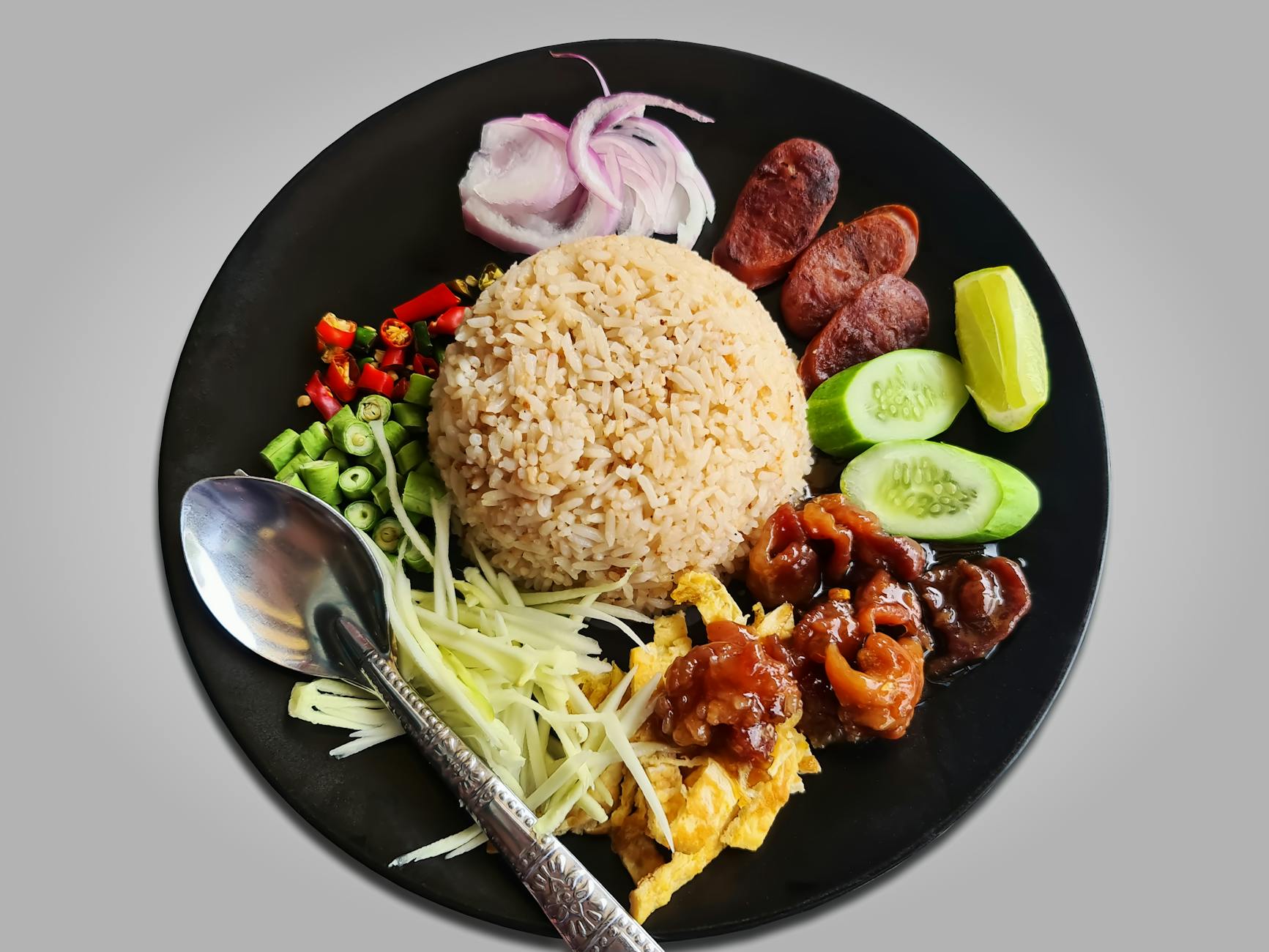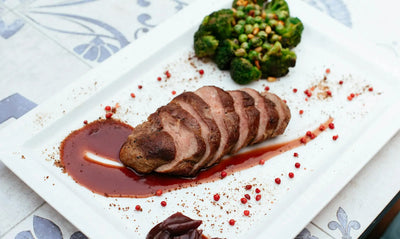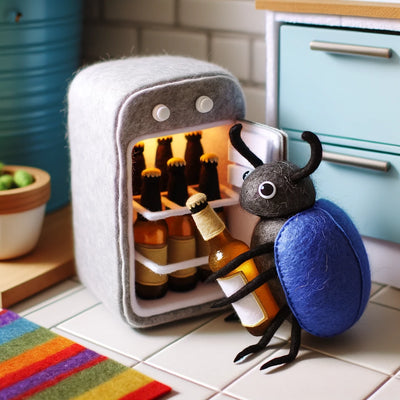The Importance of Properly Storing Cooked Rice
Why Proper Storage Matters
Storing cooked rice correctly is crucial for maintaining its freshness, taste, and texture. Proper storage also helps to retain the nutritional value of rice while preventing food waste. When you've spent time preparing a delicious meal, ensuring that your efforts remain enjoyable for as long as possible should be a priority.
Moreover, efficient storage solutions optimize the use of your refrigerator space. Whether you have a compact fridge or a spacious French door model, organizing your leftovers can help maintain order and cleanliness. If you're a culinary enthusiast or simply someone who appreciates having meals readily available, understanding how to keep your rice fresh becomes an invaluable part of kitchen management.
Risks of Improperly Stored Rice
Improper storage of cooked rice can lead to a myriad of issues. One of the most significant risks is the growth of Bacillus cereus, a bacterium that can cause food poisoning. This bacterium can survive the cooking process and, if rice is left at room temperature for too long, can multiply to dangerous levels.
Consuming rice that has been incorrectly stored may result in symptoms such as nausea, vomiting, and diarrhea. To prevent these risks, it's important to store rice under the right conditions, which include prompt refrigeration and the use of appropriate containers.
Here are some risks associated with improperly stored rice:
| Risk | Result |
|---|---|
| Bacterial growth | Food poisoning |
| Exposure to air | Drying out and hardening |
| Absorption of odors | Unpleasant taste |
For those storing rice in versatile refrigerator styles, such as the undercounter freezer or the top freezer refrigerator with an ice maker, it's important to be aware of the risks and take the necessary precautions. Learn more about safe storage practices and how to extend the shelf life of cooked rice in our detailed guide on rices chilling journey.
Preparing Cooked Rice for Storage
Before you tuck your cooked rice into the fridge, it's critical to prepare it properly. This ensures that when you're ready to enjoy your rice again, it's just as fresh and delicious as when you first made it.
Cooling Down Cooked Rice
To preserve the quality and minimize the risk of bacterial growth, it's important to cool down cooked rice quickly before refrigerating. The goal is to bring the rice to room temperature within two hours of cooking. To accelerate the cooling process, spread the rice out on a clean, shallow tray or dish, increasing the surface area for faster heat dissipation. Once the rice has cooled, it's time to package it up for storage. For more insights on efficient storage methods, you might find our article on how to organize french door refrigerator helpful.
Portioning Rice for Storage
Portioning your rice can save time and preserve its freshness. Divide the rice into servings that you'll likely consume in one meal. This prevents reheating and cooling multiple times, which can deteriorate the rice's texture and taste. Use airtight containers or resealable bags to portion the rice, pressing out any excess air before sealing to maintain freshness.
When portioning, consider the following table for general serving sizes:
| Serving Size | Cups of Cooked Rice | Serves |
|---|---|---|
| Single Serving | 1 cup | 1 person |
| Family Serving | 4 cups | 4 people |
| Large Gathering | 8 cups | 8 people |
Remember to label each container with the date of storage. This practice helps track how long the rice has been stored and ensures you use the oldest portions first, reducing waste. For further guidance on labeling and food safety, check out our article on chili fridge survival know how long it lasts.
By following these steps, you can rest assured that your cooked rice will be kept fresh and safe to eat when stored in the fridge. And when you're ready for your next meal, you'll have perfectly portioned rice that is quick and easy to reheat. For tips on reheating and maintaining the quality of your rice, take a look at our comprehensive guide on rices chilling journey how long can it last in the fridge.
Storing Cooked Rice in the Fridge
Properly storing cooked rice in the refrigerator is essential to maintain freshness and ensure food safety. To keep your rice tasting as good as the day it was cooked, you'll want to pay close attention to the containers you use and how you place them in the fridge.
Best Containers for Storing Rice
The key to keeping rice fresh in the fridge is using the right type of container. Airtight containers are the best option as they prevent moisture and other contaminants from getting in. Glass containers with snug lids are ideal as they do not absorb flavors and are easy to clean. Alternatively, plastic containers can also be used as long as they are BPA-free and airtight.
Here are some recommended container types for rice storage:
- Glass containers with airtight lids
- BPA-free plastic containers with snap-on lids
- Reusable silicone bags that seal tightly
Ensure your containers are clean and dry before adding the rice. This will help prevent bacterial growth and maintain the quality of your rice.
Placement in the Fridge
The placement of cooked rice in the refrigerator can impact its shelf life and freshness. The goal is to store rice in a consistent, cold environment to slow down the growth of bacteria.
Here is a guideline for fridge placement:
| Location in Fridge | Benefit |
|---|---|
| Middle Shelf | Consistent temperature away from the cooling elements |
| Away from the Fridge Door | Less exposure to temperature changes from frequent opening |
Avoid placing rice containers in the door shelves, as the temperature there is less stable due to the frequent opening and closing of the fridge door. For those with larger refrigerators or specific fridge types, you may want to consult resources like the art of preservation finding the right chill for your fridge or experience the luxury top stainless steel side by side refrigerators for your home for more tailored advice.
Also, keep the rice away from raw foods to avoid cross-contamination. If you're storing a large batch of rice, consider dividing it into smaller portions in multiple containers. This not only helps the rice cool faster but also reduces the risk of contamination each time you open the container.
By following these container and placement tips, you can extend the freshness of your cooked rice and enjoy it safely for days to come. For further details on rice storage, including how long it can last in the fridge, refer to our guide, rices chilling journey how long can it last in the fridge.
How Long Can You Store Cooked Rice?
Understanding the shelf life of cooked rice and recognizing when it has gone bad are critical aspects of kitchen safety and preventing foodborne illness. This section will guide you through how long you can keep your cooked rice fresh in the fridge and the telltale signs that it's time to throw it away.
Shelf Life of Cooked Rice
Cooked rice can be a convenient staple, but it’s important to store it properly to maintain its freshness. When stored in the refrigerator at a consistent temperature of 40°F (4°C) or below, cooked rice can typically last between 4 to 6 days. To ensure the longest possible shelf life, refrigerate the rice within two hours after it's cooked.
Here's a quick reference table for the shelf life of cooked rice:
| Storage Method | Shelf Life |
|---|---|
| Room Temperature (Above 90°F) | 1 hour |
| Room Temperature (Below 90°F) | 2 hours |
| Refrigerated (40°F or below) | 4 to 6 days |
| Frozen (-0°F or below) | 1 month |
For more details on extending the shelf life of your rice and other foods, explore our article on rices chilling journey how long can it last in the fridge.
Signs of Spoiled Rice
It's crucial to be able to identify if your cooked rice has gone bad to avoid the risks of food poisoning. Spoiled rice may exhibit several signs indicating that it's no longer safe to eat:
- Odor: A sour or unusual smell is a clear indication that your rice should not be consumed.
- Texture: If the rice has become overly hard, dry, or if it has a slimy texture, it's best to discard it.
- Mold: Any visible mold growth, which could appear as green, black, or white spots, means the rice has spoiled.
- Discoloration: Changes in color, such as yellowing or graying of the rice, are signs of deterioration.
If you notice any of these signs, it is imperative that you dispose of the rice immediately. Always remember that when in doubt, it's safer to throw it out.
For more information on food safety and storage, you might find our articles on keeping it fresh how long can pasta stay refrigerated and chili fridge survival know how long it lasts helpful. Additionally, for tips on organizing your fridge to prevent cross-contamination and promote efficient storage, check out how to organize french door refrigerator.
Reheating Stored Cooked Rice
Once you've stored your cooked rice in the fridge, ensuring it's reheated correctly is just as important as the initial storage process. Proper reheating not only helps in retaining the rice's flavor and texture but also in preventing foodborne illnesses.
Safe Reheating Practices
To safely reheat your rice, follow these guidelines:
- Ensure the rice reaches 165°F (74°C): Using a food thermometer, check that the rice has reached a temperature that kills potential bacteria.
- Reheat only once: Reheating rice more than once increases the risk of food poisoning.
- Use a moist heat method: Adding a tablespoon of water per cup of rice can help maintain moisture and prevent the rice from drying out. Cover the rice to trap steam which aids in reheating it evenly.
- Stir occasionally: This promotes even heating and prevents cold spots in the rice where bacteria might survive.
Remember, if you're using a microwave, the rice should be placed in a microwave-safe container. For stove-top reheating, a pot with a tight-fitting lid is ideal to keep the steam in.
Avoiding Foodborne Illness
Rice can harbor Bacillus cereus, a bacterium that can cause foodborne illness. To minimize the risk:
- Do not leave cooked rice at room temperature for more than two hours.
- Store rice in the fridge within 30 minutes of cooking to rapidly cool it down. For tips on how to store cooked rice, you might be interested in our article on rices chilling journey and how long it can last in the fridge.
- Reheat rice only once after it has been cooled and stored. Multiple reheats can increase the risk of bacterial growth and foodborne illness.
By following these reheating practices, you'll ensure that your cooked rice remains delicious and safe to eat. Be sure to enjoy your reheated rice with the peace of mind that comes from knowing you've handled it properly. For additional insights and best practices in rice storage, refer to our comprehensive guide on keeping it fresh and mastering the art of storing cooked rice in the fridge.
Tips for Storing Cooked Rice
Storing cooked rice properly is crucial to maintaining its freshness and ensuring it is safe to eat when you're ready to enjoy it again. Here are some important tips to help you keep your cooked rice in the best condition.
Labeling and Dating Containers
When storing rice in the fridge, it's essential to label the containers with the date of storage. This practice helps you keep track of how long the rice has been in the fridge and ensures that you use it within the recommended time frame. Labeling is also beneficial if you have multiple types of rice or dishes stored, preventing any mix-ups and helping you rotate your leftovers effectively.
You can use a simple piece of masking tape and a permanent marker to write down the content and the date before placing the container in the fridge. Here's a sample labeling format you might find helpful:
| Container Content | Date Stored |
|---|---|
| Brown Rice | 04/05/2023 |
| Jasmine Rice | 04/06/2023 |
| Rice Pilaf | 04/07/2023 |
For more tips on organizing your fridge and maximizing space, check out our article on how to organize french door refrigerator.
Utilizing Proper Hygiene Practices
Maintaining cleanliness is vital when handling and storing cooked rice. Always wash your hands thoroughly before and after touching the rice to prevent the spread of bacteria. Use clean utensils when serving or transferring rice to storage containers. This helps avoid cross-contamination from other foods or surfaces.
Make sure that the storage containers are also clean and dry before adding rice to them. Any moisture can promote bacterial growth and spoil the rice more quickly. For information on selecting the best containers for your needs, you might find our article on the luxury of space 36 inch french door fridge uncovered useful, as it discusses various storage solutions for different fridge sizes.
By following these tips and maintaining proper hygiene, you can ensure that your cooked rice remains fresh and safe to consume. For more detailed guidelines on the shelf life of cooked rice and how to tell if it's gone bad, take a look at our article on rices chilling journey how long can it last in the fridge. Remember that proper food storage is not just about keeping your rice tasting great—it's also about keeping you and your loved ones healthy.
Other Storage Options
Beyond refrigeration, there are other methods to keep your cooked rice fresh and safe for consumption. Freezing cooked rice ensures its longevity, while repurposing it can breathe new life into your leftovers.
Freezing Cooked Rice
Freezing is a fantastic way to preserve the quality of your rice for an extended period. To freeze cooked rice, you should:
- Ensure the rice is cooled completely to prevent bacterial growth.
- Portion the rice into serving sizes to avoid thawing more than you need at one time.
- Use airtight, freezer-safe containers or bags to protect against freezer burn.
Here's a simple guideline for freezing cooked rice:
| Step | Action |
|---|---|
| 1 | Spread the cooked rice on a baking sheet to cool down. |
| 2 | Divide the rice into your desired portions. |
| 3 | Pack the portions into airtight containers or freezer bags. |
| 4 | Label the containers with the current date. |
| 5 | Place the containers in the freezer for up to 3 months. |
Once frozen, rice can be easily reheated to restore its original texture and flavor. For the best results, consider microwaving the rice with a splash of water to reintroduce moisture. Explore the topic of rice storage further in our guide on rices chilling journey how long can it last in the fridge.
Repurposing Leftover Rice
If you find yourself with an abundance of leftover rice, consider repurposing it into new and exciting dishes. Leftover rice can be transformed into:
- Fried rice: A quick and easy dish that can accommodate a variety of ingredients.
- Rice pancakes: Mix with an egg, some flour, and your favorite seasonings, then pan-fry for a crispy treat.
- Rice pudding: Sweeten your leftover rice with milk, sugar, and cinnamon for a comforting dessert.
Repurposing your rice not only prevents waste but also provides an opportunity to get creative with your meals. For inspiration on what to do with other leftovers, take a look at our article on say goodbye to waste mastering the shelf life of spaghetti in the fridge.
Whether you choose to freeze your cooked rice for later use or repurpose it into delectable new dishes, these storage options ensure that your efforts in the kitchen remain fruitful and your meals stay fresh. Always remember to practice safe food handling and to enjoy your rice dishes within a reasonable time frame for the best dining experience.
Get Your Upgrade or New Addition at Fridge.com
Whether you're searching for your perfect fridge, freezer, wine fridge, beer fridge, ice maker, or kegerator, we have what you need.
Shop the world's best brands at Fridge.com.
We also have tons of awesome articles about kitchen stuff and home news. Enhance your home, garage, backyard, patio, and office with the coolest essentials. With every necessary type of residential refrigerator or freezer in our collection, we've got you covered.
Elevate your game and shop now at Fridge.com!






